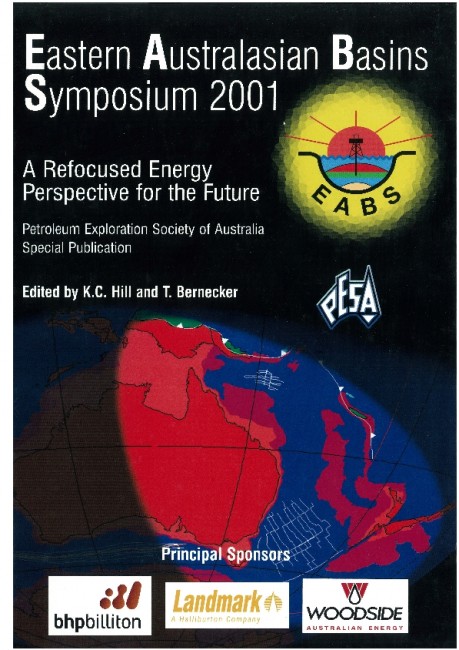Publication Name: Eastern Australian Basins Symposium 2001
Authors: J. Blevin
Date Published: November 2001
Number of Pages: 34
Reference Type: Magazine Article
Abstract:
In offshore east and south-east Australia, the remote regions under Australia's marine jurisdiction (AEEZ) include large areas of marginal plateaus and adjacent ocean basins. Evolution of the largest of these plateaus, the Lord Howe Rise (LHR) was influenced by multiple periods of tectonism and volcanic activity spanning the Palaeozoic to Tertiary. Much of the pre-Tasman (Early Cretaceous and older) geology is obscured on seismic data by locally prolific volcanic intrusions and structural overprinting by younger tectonic events. The younger basins along the southeast Australian mainland provide suitable analogues to constrain the ages of the sedimentary succession and the timing of tectonic events associated with pre-Tasman Basin breakup evolution. However, following breakup in the Campanian/Santonian, the affinity between the LHR and east Australian basins began to diverge. Many detached crustal fragments underlying LHR foundered through rapid post-rift subsidence by Maastrichtian to early Tertiary time, while the basins that remained 'attached' to the eastern Australian plate underwent normal rates of post-rift subsidence.While the effective petroleum systems elements of the Gippsland, Bass and Taranaki basins occur principally within the post-rift succession, the success of hydrocarbon systems of the LHR relies on effective generation from mid-Cretaceous and older source rocks deposited in semi-restricted rift basins. Neogene generation and migration is likely, due to the absence of relatively thick Late Cretaceous to Tertiary overburden. Plays recognised include structural traps such as rotated fault blocks and late inversion structures, as well as stratigraphic traps such as basement onlap and subcrop truncation of dipping strata. Seismic 'amplitude anomalies' suggest that Late Cretaceous and younger age bathyal siliceous chalks are an effective seal facies in the northern LHR. In the southern LHR, long-lived planation and channelling across the high-standing Lord Howe Platform may have provided a local source for clastic facies until the mid-Oligocene. A clearer understanding of the potential of the LHR basin systems will require an integration of tectonic reconstructions and basement terranes, as well as further mapping to constrain the regional chronostratigraphic relationships between the different basin systems.


